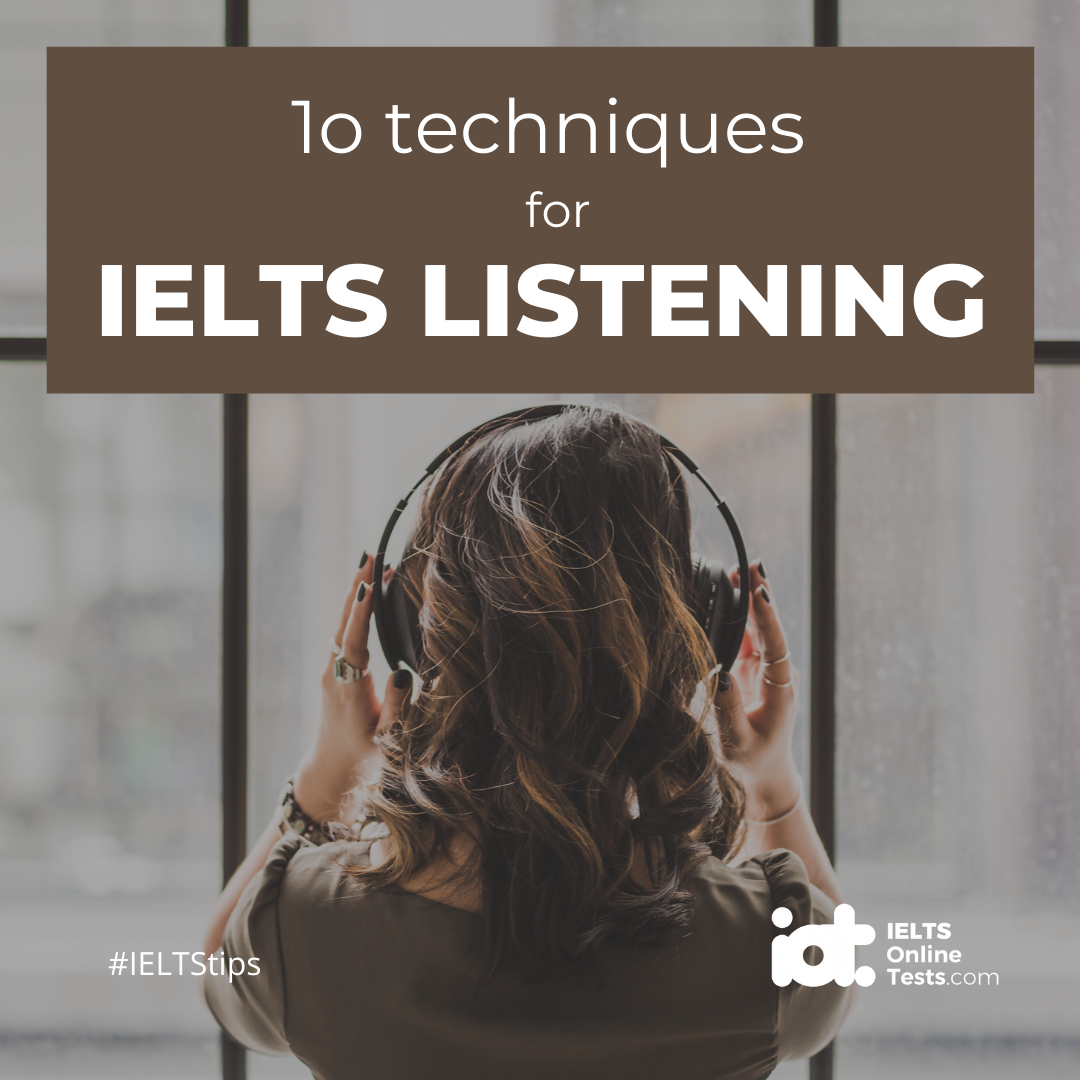
10 techniques for IELTS Listening
These 10 IELTS Listening Tips provide you with essential strategies to help you get the score you need in the exam and show you how to improve IELTS listening.
1. MAKE SURE YOU SPELL YOUR ANSWER CORRECTLY
Your answer will be marked as incorrect if you have spelt any words wrongly, even if the answer was correct. For example, if the correct answer from the recording is building but you spelt it bilding, your answer is wrong and you will get no mark.
2. USE THE EXACT WORDS OR NUMBERS GIVEN IN THE RECORDING
The correct answer will always be exactly the same as that spoken on the recording. There will be no paraphrasing. If you find you need to change to a different conjugation or tense, for example, your answer will be wrong.
3. CHECK THE WORD/NUMBER LIMIT GIVEN IN THE QUESTION AND STICK TO IT
If you go over the word limit given on your question paper, your answer will be marked as wrong. If the paper says use one word in your answer, use one word. Check and then double check the question for the word limit.
Note: hyphenated words count as one word i.e. old-fashioned man counts as 2 words
4. THE WORD LIMIT MEANS UP TO AND INCLUDING THAT LIMIT
If the given limit is 3 words you can use 1, 2 or 3 words.
5. THE LISTENING PAPER MAY USE A PARAPHRASE IN THE WRITTEN TEXT OF THE QUESTION
Don’t expect that the recording you are listening to will use the same phrases and expressions as the text on the question paper. The meaning will be the same. However, the missing words that you will need to insert on the answer paper will be exactly the same as those given in the recording.
6. THE ANSWERS ARE ALWAYS IN THE ORDER OF THE RECORDING
Be careful though, as although the questions are in the same order as the recording, for multiple choice the answer options are not necessarily in the same order.
7. USE THE GUIDE WORDS IN THE RECORDING
There will be certain words or headings in the question paper which can act as guides to your position in the recording. Use these guide words to track and check exactly where you are at all times. This helps to ensure you do not get lost. If you do find you are momentarily lost, listen out for the next guide word or words to locate the position in the recording.
8. MOVE ON IF YOU MISS AN ANSWER
Don’t spend time thinking or searching if you find you have missed an answer or you are lost. If you do you could miss even more answers. Leave the answer blank and start searching immediately for the next guide word and your place in the recording.
9. AT THE END OF THE TEST GO BACK QUICKLY AND GUESS ANY MISSING ANSWERS
If you don’t know the answer by the end of the test then make a best guess. You won’t lose any marks for a wrong answer and you may even have guessed correctly.
10 TRY TO PREDICT THE TYPE OF MISSING WORD(S) FROM THE SURROUNDING TEXT ON THE QUESTION PAPER
The surrounding text on a missing answer can give you a clue to the type of answer you are looking for. For example, an article (a, an or the) before the gap on the question paper will tell you the missing word is a noun. The topic of the talk will give you an idea of what that noun might be. A gap before or after a verb may be an adverb, and so on.
You can practice more FREE listening tests at: https://ieltsonlinetests.com/ielts-exam-library#academic




